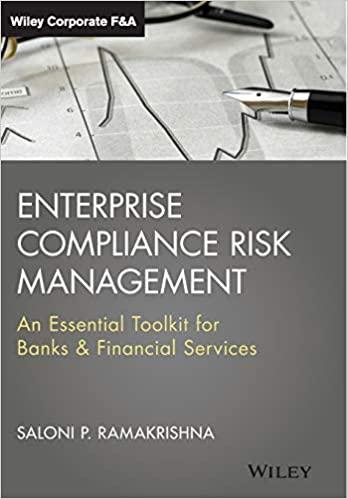Answered step by step
Verified Expert Solution
Question
1 Approved Answer
Liang Company began operations in Year 1. During its first two years, the company completed a number of transactions involving sales on credit, accounts receivable











Liang Company began operations in Year 1. During its first two years, the company completed a number of transactions involving sales on credit, accounts receivable collections, and bad debts. These transactions are summarized as follows. Year 1 a. Sold $1,354,000 of merchandise (that had cost $979,600) on credit, terms n/30. b. Wrote off $18,300 of uncollectible accounts receivable. c. Received $670.900 cash in payment of accounts receivable. d. In adjusting the accounts on December 31, the company estimated that 2.40% of accounts receivable would be uncollectible. Year 2 e. Sold $1,562,100 of merchandise (that had cost $1,313,800) on credit, terms n/30. f. Wrote off $31.400 of uncollectible accounts receivable. g. Received $1.290,300 cash in payment of accounts receivable. h. In adjusting the accounts on December 31, the company estimated that 2.40% of accounts receivable would be uncollectible. Required: Prepare journal entries to record Liang's Year 1 and Year 2 summarized transactions and its year-end adjustments to record bad debts expense. (The company uses the perpetual inventory system and it applies the allowance method for its accounts receivable.) (Round your intermediate calculations to the nearest dollar.) JE Year 1 JE Year 2 Prepare journal entries to record Llang's Year 1 summarized transactions and Its year-end adjustments to record bad debts expense. (The company uses the perpetual Inventory system and it applies the allowance method for its accounts receivable.) View transaction list Journal entry worksheet Sold $1,354,000 of merchandise on credit, terms n/30. Note: Enter debits before credits. Transaction General Journal Debit Credit a(1) Record entry Clear entry View general Journal Prepare journal entries to record Llang's Year 1 summarized transactions and its year-end adjustments to record bad debts expense. (The company uses the perpetual inventory system and it applies the allowance method for its accounts receivable.) View transaction list Journal entry worksheet Received $670,900 cash in payment of accounts recevable. Note: Enter debits before credits Transaction General Journal Debit Credit C View general journal Record entry Clear entry Prepare journal entries to record Llang's Year 1 summarized transactions and its year-end adjustments to record bad debts expense. (The company uses the perpetual inventory system and It applies the allowance method for its accounts receivable.) View transaction list Journal entry worksheet Sold $1,562,100 of merchandise on credit, terms n/30. Note: Enter debits before credits. General Journal Debit Credit Transaction e(1) View general Journal Record entry Clear entry Prepare journal entries to record Liang's Year 2 summarized transactions and its year-end adjustments to record bad debts expense. (The company uses the perpetual Inventory system and it applies the allowance method for its accounts receivable.) View transaction list Journal entry worksheet 2 3 4 5 Record cost of goods sold, $1,313,800. Note: Enter debits before credits Transaction General Journal Debit Credit e(2) View general Journal Record entry Clear entry JE Year 1 JE Year 2 Prepare journal entries to record Liang's Year 2 summarized transactions and its year-end adjustments to record bad debts expense. (The company uses the perpetual inventory system and it applies the allowance method for its accounts receivable.) View transaction list Journal entry worksheet 1 2. 3 4 5 > Wrote off $31,400 of uncollectible accounts receivable. Note: Enter debits before credits Transaction General Journal Debit Credit f. Record entry Clear entry View general journal JE Year 1 JE Year 2 Prepare journal entries to record Liang's Year 2 summarized transactions and Its year-end adjustments to record bad debts expense. (The company uses the perpetual inventory system and It applies the allowance method for its accounts receivable.) View transaction list Journal entry worksheet 2 3 4. 5 > Received $1,290,300 cash in payment of accounts receivable. Note: Enter debits before credits. Debit General Journal Transaction Credit 9 View general journal Clear entry Record entry JE Year 1 JE Year 2 Prepare journal entries to record Liang's Year 2 summarized transactions and its year-end adjustments to record bad debts expense. (The company uses the perpetual inventory system and It applies the allowance method for its accounts recelvable.) View transaction list Journal entry worksheet
Step by Step Solution
There are 3 Steps involved in it
Step: 1

Get Instant Access to Expert-Tailored Solutions
See step-by-step solutions with expert insights and AI powered tools for academic success
Step: 2

Step: 3

Ace Your Homework with AI
Get the answers you need in no time with our AI-driven, step-by-step assistance
Get Started


